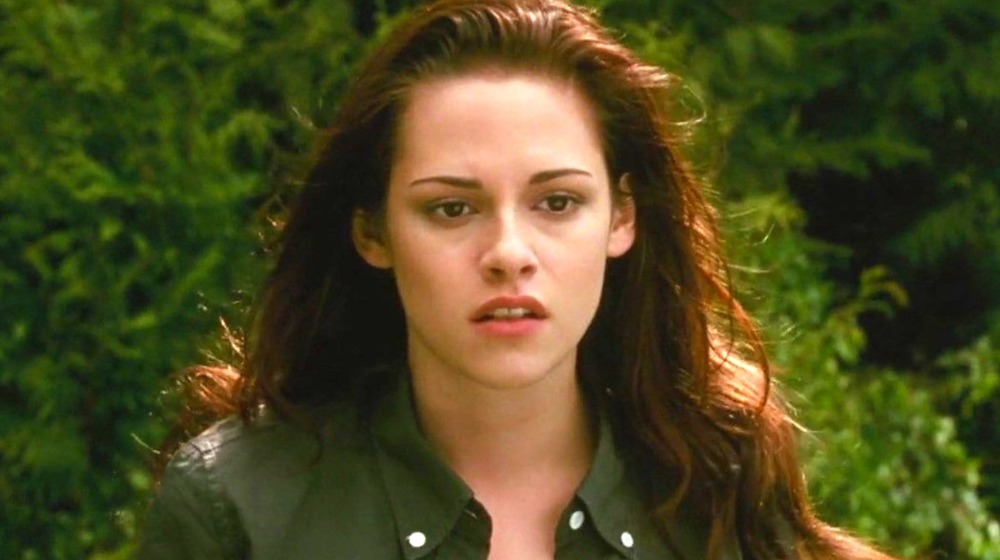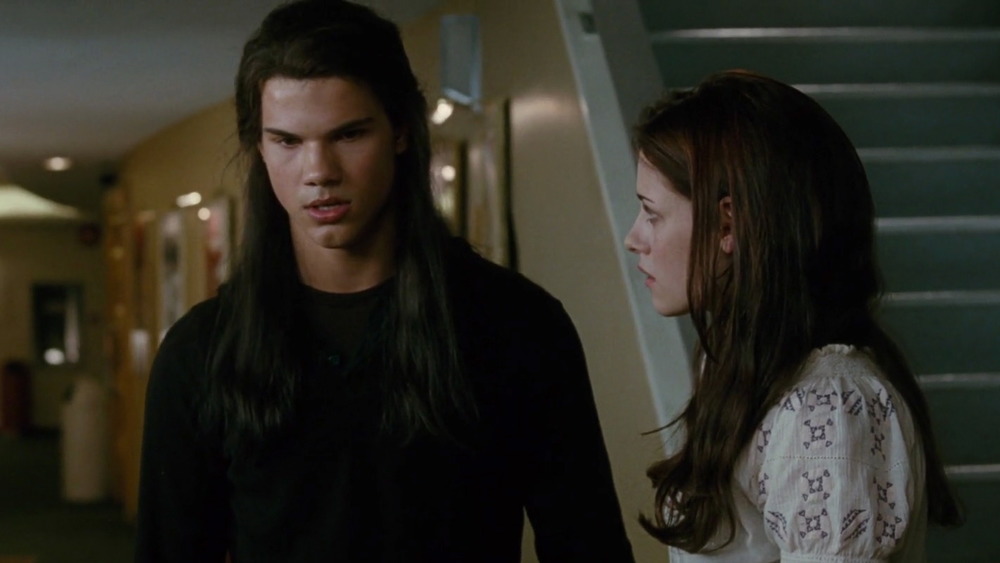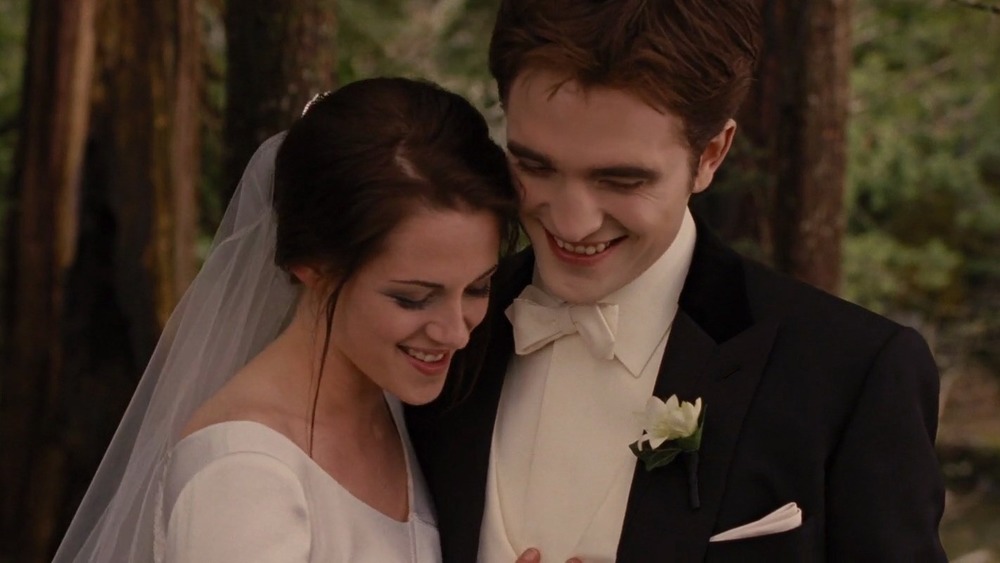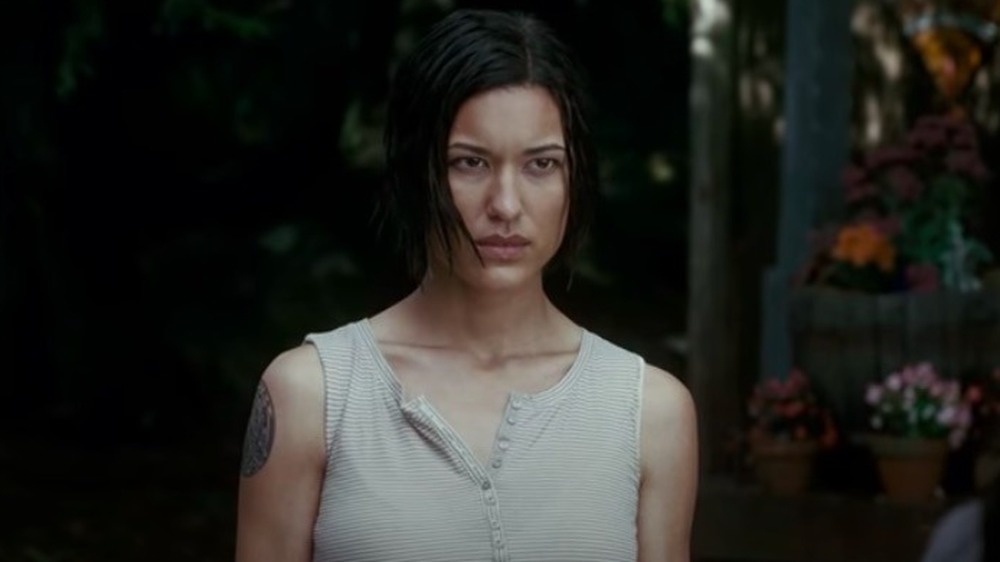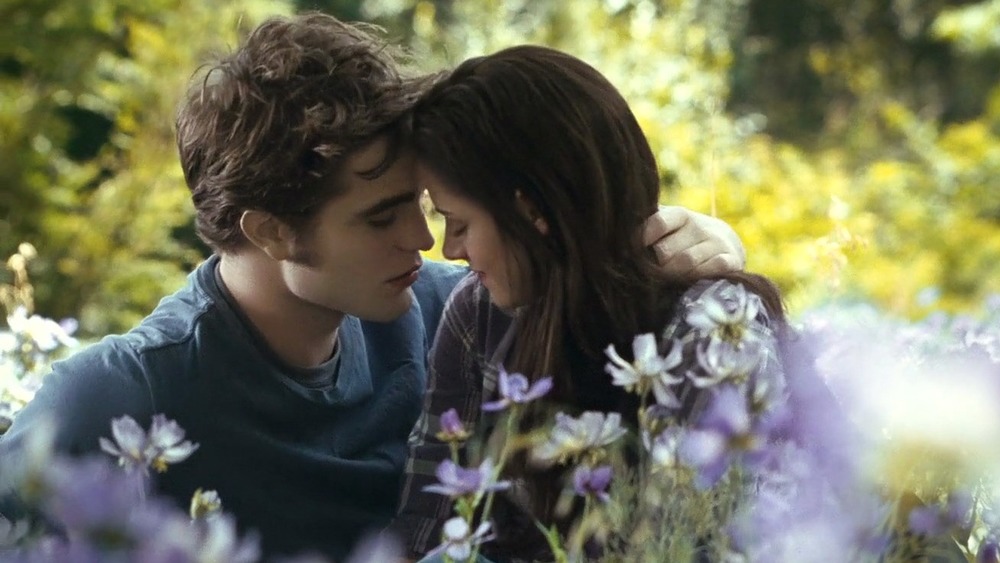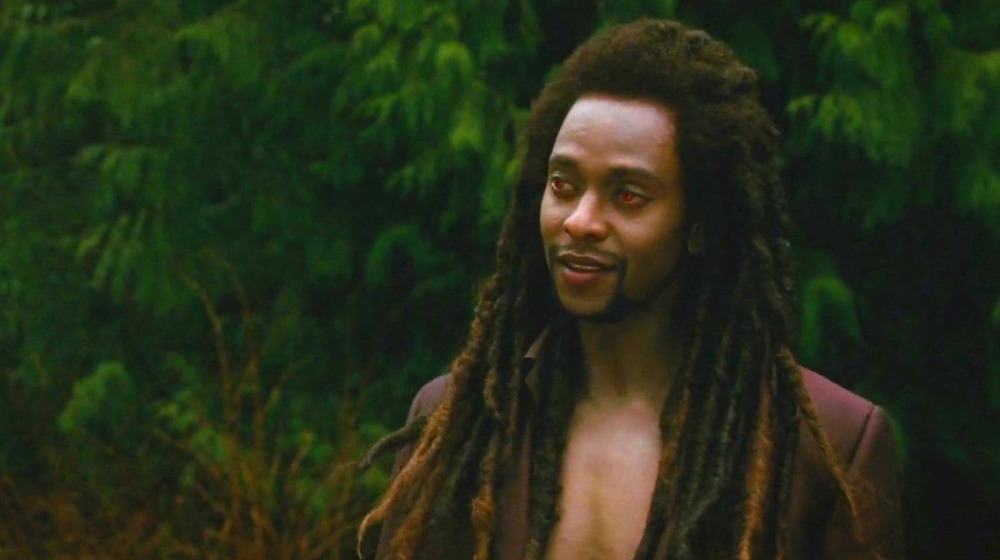Things Only Adults Notice About The Twilight Series
Twilight, while popular, is undeniably a flawed series. Based on the book series by Stephenie Meyer, the movies follow a teen girl, Bella (Kristen Stewart), who, after moving to a new town, falls in love with a 104-year-old vampire who looks 17 and poses as a high school student, Edward Cullen (Robert Pattinson). Over the course of the series, Bella faces many hurdles — including multiple near-death experiences — before eventually becoming a vampire herself.
The relationship between Bella and Edward — once a pairing many teens deemed worthy of idolizing — has more and more frequently been acknowledged as the toxic relationship that it is, one that includes stalking and manipulating on (a much older and much more powerful) Edward's part.
But that big issue is just one of the flaws that come to light when viewing the series as an adult. There are quite a few eye-catching problems within the series, as several outlets, such as Screen Rant, have been covering in the many years since the final movie came out in 2012. Here is a breakdown of some of the most notable ones.
Twilight's only lead POC character is a predator
Twilight actually has a lot of key players who are Indigenous — a group both underrepresented and often misrepresented — due to the setting being located near the Quileute Tribe's reservation. However, the only one of these characters who could be considered a lead is the werewolf Jacob Black (played by Taylor Lautner, who claims to have distant Native ancestry but for the most part wouldn't be considered a Native actor, as laid out by FilmDaze).
Jacob begins the series harmless enough. Sure, he has a crush on Bella, but it remains innocent as he doesn't act on it. But, as the series progresses and his friendship with Bella grows (running parallel to Bella's ever-growing devotion to Edward), he becomes increasingly persistent. He insists that Bella loves him but just doesn't know it yet, despite her own assertions that she only loves Edward. Finally, at one point, he forcibly kisses her, causing Bella to punch him out of self-defense and, ultimately, harm herself. Jacob doesn't really face any consequences for this, outside of the punch that only hurts Bella, since Bella quickly forgives him.
By the end of the series, Jacob has backed off of Bella — but only because he has imprinted on her infant daughter, Renesmee. Any way you spin the imprinting-on-a-baby detail, it never comes across as fully digestible, but it's especially concerning when you consider the fact that Jacob has already been made into a predator. Meyer, as the series' creator, made a conscious choice to make the only male lead of color an aggressive predator — in stark contrast to the white male lead, Edward, who represents chastity and old-fashioned values.
The underlying morals skew very conservative
Speaking of Edward's old-fashioned values, the series addresses sexuality and marriage from a very conservative viewpoint. And while religion is not directly addressed in the books, Meyer's Mormonism is still present in the series, as has been extensively written about.
Bella is not quiet about her desire to have sex with Edward, which, on the surface, almost comes across as somewhat progressive. Young girls should be able to feel comfortable sitting with and expressing their sexual desires. However, when you bring in Edward's views on sex, things become more complicated. Edward wants them to wait until they get married to have sex, which they do, and while there is nothing wrong with choosing to wait, it does feel more like Edward's decision than Bella's.
Further, after they do have sex, Bella becomes pregnant and goes through an extremely draining pregnancy and a childbirth experience so intense and painful that it kills her. (She is then revived by being turned into a vampire). Ultimately, Bella gets to continue fulfilling her sexual desires as a vampire for the rest of her life, which gives a pretty clear message about the kind of satisfaction that can come with waiting until marriage — and becoming a mother. As an essay in Catapult put it, "The fulfillment of Bella's sexual desires, after enduring the compromise of marriage and consequence of a painful pregnancy, allows her to get what she truly wants—amazing sex for all of eternity."
Leah's treatment in Twilight didn't age so well
Leah Clearwater (Julia Jones) is the only female member of the Quileute Tribe's wolf pack and is pretty much the only woman of color in any way essential to Twilight's plot. The only other one likely to come to mind is Bella's classmate, Angela, although if you took Angela out of the plot, it wouldn't affect the arc. Meyer had a lot of potential at her disposal to make Leah into a strong and complex female character. However, that isn't exactly what happened.
Leah is woven into the story mostly through her past relationship with the pack leader, Sam (Chaske Spencer). She and Sam used to date until Sam imprinted on someone else, leaving her heartbroken. From then on out, she is depicted as jealous and spiteful toward Sam and his new relationship. She has no other defining personality traits, nor does she receive much in way of her own storyline or character arc.
Twilight lacks LGBTQ+ representation
There are quite a few characters in Twilight — from the whole Cullen clan to Jacob's sizable wolf pack to Bella's high school classmates — and yet, all of these characters are heterosexual. Throughout the entire series, Meyer neglected to include any LGBTQ+ representation, even in minor characters.
This ties back to the story's conservative undertones and the way Bella's sexual desires can only be fulfilled through marriage. When this book was released, marriage between same-sex couples was not yet legalized. This, unfortunately, means that any queer readers seeing themselves in Bella were presented with a huge roadblock when it came to understanding what fulfillment of their sexual desires could look like. Sex outside of marriage is not presented as an option for Bella.
The lack of LGBTQ+ representation is definitely one of the most glaring issues when watching these — not that old — films again as an adult.
There isn't much racial diversity
While there are plenty of Native characters (although not treated the best), the diversity pretty much ends there. The entire Cullen clan is white — which, when you think about it, makes you wonder if Carlisle had a prejudice when it came to choosing humans to save and turn into vampires. Moreover, the only Black vampire we see, Laurent (Edi Gathegi), has a minor and brief storyline: He's killed in the second installment, New Moon. Plus, the vampire of color is made to be one of the villains, not dissimilar to how the Native love interest is made to be a predator.
In 2017, the director of the first film, Catherine Hardwicke, gave an interview with The Daily Beast in which she discussed the lack of diversity. She confessed that she wanted the cast to be much more diverse, but her ideas on inclusive casting were halted by Meyer herself. Hardwicke said, "And I was like oh my God, I want the vampires, I want them all—Alice, I wanted her to be Japanese! I had all these ideas. ... [Meyer] said, I wrote that they had this pale glistening skin!"
